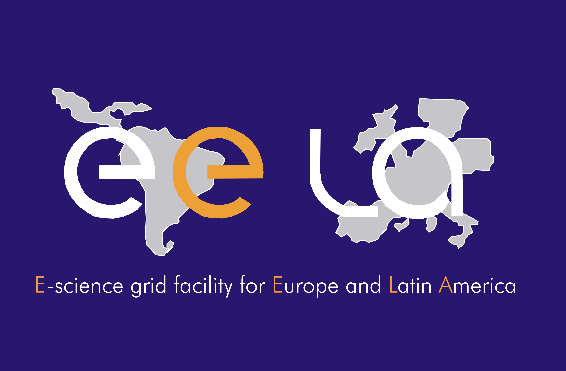EELA-2

E-science grid facility for Europe and Latin America 2 - EELA-2
Started: January 1st, 2008
Finished: January 2010
Funding: EC – FP7 - Capacities
Website: http://www.eu-eela.eu/
General objective
To build a high-capacity computer grid, with a high-quality and scalable production, providing global access 24/7 to distributed computing, storage and networking resources, which are required by a wide range of applications used in scientific collaborations developed between Europe (EU) and Latin America (LA), with special emphasis on the delivery of a full range of flexible services to meet the applications’ requirements and ensure the long-term sustainability of the e-Infrastructure, beyond the project’s completion date.
Participants
CIEMAT (Spain), CUBAENERGIA (Cuba), CLARA (Latin America), UCC-CMRC (Ireland), HLP (France), CNRS (France), INFN (Italy), LINTI – UNLP (Argentina), REUNA (Chile), SENAMHI (Peru), ULA (Venezuela), UNIANDto ES (Colombia), UNAM (Mexico), UPORTO (Portugal), UFRJ (Brazil) y UTPL (Ecuador). Argentina: ILFP, LSC / UBA. Brazil: CEFET-RJ, UNILASALLE, FIOCRUZ, INCOR/USP, IME, LNCC, ON, RNP, SPRACE, UnB, UFCG, UFF, UFJF, UPMackenzie. Chile: CEAZA, UDEC, UFRO, UTFSM, UVALPO. Colombia: UIS. France: IPGP. Peru: CIP, PUCP, USMP. Portugal: UAVR, UMINHO. Spain: CESGA, MAAT, UC, UCM, UEX, GRyCAP - UPV. Venezuela: USB.
Funded by the 7th Framework Programme – Capacities of the European Commission, the EELA-2 Project (E-science grid facility for Europe and Latin America) aims to build a high capacity, production-quality, scalable Grid Facility providing round-the-clock worldwide access to distributed computing, storage and network resources needed by the wide spectrum of applications from European - Latin American scientific collaborations, with special focus on providing a complete set of versatile services fulfilling application requirements and ensuring the long-term sustainability of the e-Infrastructure beyond the term of the project.
Such an ambitious project would not be possible without the prior existence of a consolidated e-Infrastructure, set up with the early intention to build a sustainable Grid platform. This was the objective of the EELA project that is providing its users with a stable, well supported Grid Infrastructure based on 16 Resource Centres (RCs) summing up to over 730 CPU cores and 60 Terabytes of storage space, thus proving that the deployment of an EU-LA e-Infrastructure was not only viable but is also responding to a real need of a significant part of the Scientific Community.
The EELA-2 vision is two-fold:
- Consolidate and expand the current EELA e-Infrastructure built on the research networks GÉANT2/European NRENs (National research and Education Networks) and RedCLARA/LA NRENs, to become an e-Infrastructure Facility, providing a full set of enhanced services to all types of applications from multiple scientific areas of European and Latin American scientific communities;
- Ascertain the conditions of the durability of the e-Infrastructure, beyond the project duration.
In two years, the very skilled and highly motivated people from Europe and Latin-America that are working in EELA-2 will be devoted to the following objectives: expand the current EELA e-Infrastructure, collaborate with related projects, support current and new grid applications, collaborate with RedCLARA and LA NRENs, support e-Science and/or National Grid initiatives (NGIs), and build the required support for the e-Infrastructure.
The great collaborative experience and the outcomes of the previous EELA project (ranked as “good to excellent”, the highest valuation possible, by the European Commission), set the basis for the success of EELA-2 and at the same time compel all the EELA-2 members and partner institutions to give their best effort in order to achieve the proposed goals, which in the long term will serve to reduce the digital divide between the European and the Latin-American countries.

Montevideo 11400. Uruguay.



